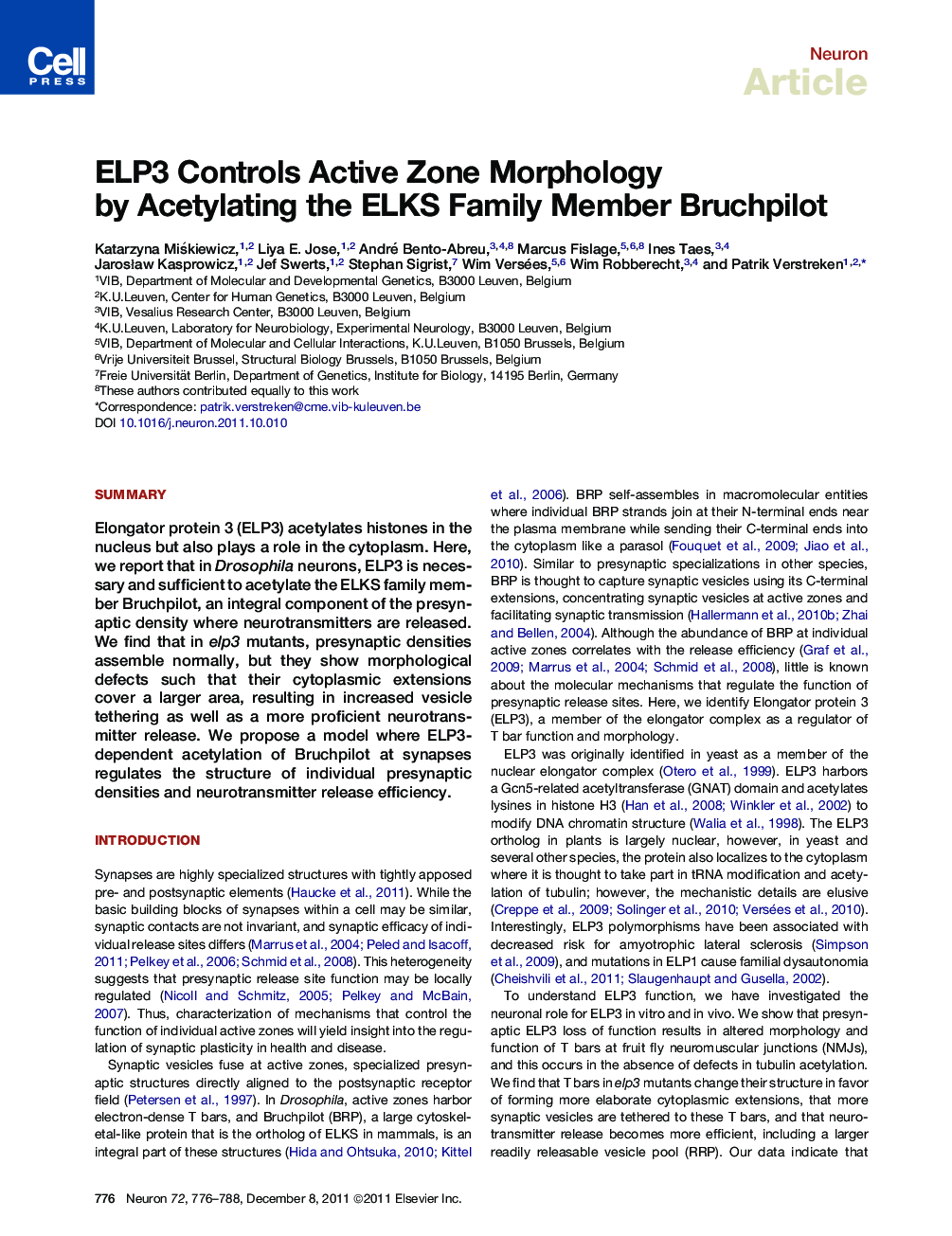| Article ID | Journal | Published Year | Pages | File Type |
|---|---|---|---|---|
| 4321433 | Neuron | 2011 | 13 Pages |
SummaryElongator protein 3 (ELP3) acetylates histones in the nucleus but also plays a role in the cytoplasm. Here, we report that in Drosophila neurons, ELP3 is necessary and sufficient to acetylate the ELKS family member Bruchpilot, an integral component of the presynaptic density where neurotransmitters are released. We find that in elp3 mutants, presynaptic densities assemble normally, but they show morphological defects such that their cytoplasmic extensions cover a larger area, resulting in increased vesicle tethering as well as a more proficient neurotransmitter release. We propose a model where ELP3-dependent acetylation of Bruchpilot at synapses regulates the structure of individual presynaptic densities and neurotransmitter release efficiency.Video Abstract To view the video inline, enable JavaScript on your browser. However, you can download and view the video by clicking on the icon belowHelp with MP4 filesOptionsDownload video (12766 K)
► ELP3 regulates neuronal function independent of a role in tubulin acetylation ► Cytoplasmic extensions of T bars in elp3 mutants cover a much larger area ► Elp3 mutants show increased synaptic vesicle tethering to T bars and a larger RRP ► ELP3 is necessary and sufficient for acetylation of Bruchpilot
